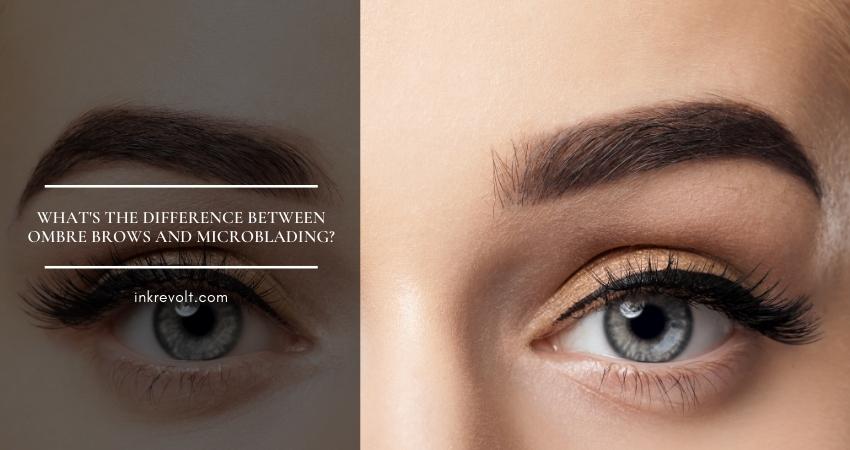What’s The Difference Between Ombre Brows And Microblading?
Eyebrows are essential to our sense of personal beauty. They make our faces look more balanced and add more nuance to our expressions. So, a fading eyebrow line can be a cause for panic. Thankfully, there are many semi-permanent treatments that can revitalize your eyebrows or redefine them in ways you want.
When you do some research on your eyebrow options, you will come across microblading and ombre procedures. What are these methods? What is the difference between ombre powder brows and microblading? Is there a superior approach between these two?
We will try to address all of your microblading vs. ombre brows queries here.

What Is “Ombre Microblading”?
Ombre and microblading are two different methods. When you hear about the ‘’ombre microblading’’, it means a two-toned set of eyebrows that have been created by combining ombre and microblading techniques.
So, the question we need to answer first is: what are ombre eyebrows?
Ombre brows are the products of a semi-permanent eyebrow styling procedure called ombre shading that uses a small machine to put incredibly thin pigment dots into the skin. This procedure creates a softly shaded brow pencil effect. Instead of a natural hair look, ombre shading provides a powdery eyebrow effect.
Now, let’s get back to ombre microblading. The mix of microbladed hair strokes and a powder fill results in a brow that looks remarkably natural. It is slightly less dramatic and substantial than an ombre powder fill and slightly more defined and filled in than just straight microbladed brows. Closer to the 12- to-18-month point, clients return for touchup appointments.
However, ombre microblading can be a more time-consuming and expensive process than standalone microblading and ombre shading procedures. The fusion of these two eyebrow beautification methods can be a great choice for anyone regardless of their skin tone and current eyebrow shape.
Ombre Powder Brows Vs. Microblading: What Is The Difference
1. Appearance
Microbladed brows look quite real since the artist meticulously draws hair-like lines on the eyebrow skin. Ombre brows, on the contrary, look more pencil-drawn since the artist only injects the pigment under the skin and waits for it to take effect and adorn the eyebrow line. There is no presence of hair-like strokes whatsoever.
Additional Read: Microblading Vs. Powdered Brow
2. Durability
Usually, microblading fades away completely after 18 to 24 months. The usual lifespan for ombre brows is usually two to three years. Do keep in mind, however, that your lifestyle, skin type, and health condition will greatly influence the longevity of both procedures.
3. Nature Of Skin Invasion
Microblading is more invasive to the skin than ombre shading. The microblading needle penetrates deeper into the skin since the artist needs to draw fine hair strokes. In the case of ombre shading, the artists don’t need to go that deep since they only need to create a misty eyebrow appearance rather than go for a natural look. So, ombre shading is less painful.
Microblading Or Ombre: Which Is Better?
Both microblading and ombre are popular eyebrow treatment options. But which one has the upper hand? For some clients, microblading would be a more sensible pick over ombre shading and vice-versa.
If your eyebrow lines have become too thin or uneven, you should microblade them to revitalize them. Ombre shading will not be the best course of action to remedy this situation. Microblading is also ideal for moderate eyebrow reshaping. Don’t like penciling your eyebrows often? Microblading should be your go-to brow modification method, then.
Microblading doesn’t work well across all skin types, however. Ombre eyebrows are a safer bet for oily skin. They are also durable in all other skin variations. Also, if you prefer a filled-in style instead of a natural look, ombre shaping would be a better pick for you.
Final Thoughts
Microblading and ombre shading are both exceptional tools to perfect your eyebrow style and shape. But, you should not impulsively choose one of these. Consider the individual pros and cons of these procedures. A hybrid look that combines the best features of these two techniques is also in the table. So, take your time and choose wisely.
